▼ FSSAI guidelines for unsafe food products recall [11-30-17]
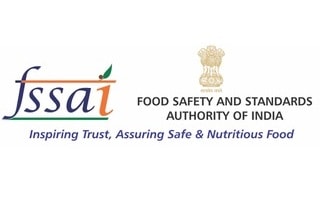 The Food Safety and Standards Authority of India (FSSAI) has issued a set of guidelines regarding the recall of unsafe food products from the market, in a bid to ensure that a proper system is in place.
Reports suggest that the food safety regulator stated that the guidelines have been issued to help food business operators frame a proper recall plan and implement them when the situation demands.
Recall can be defined as an action to remove food products from market at any stage of the food chain, including that possessed by consumer, which may pose a threat to the public health or food that violate the Act, or the rules or regulations made thereunder.
As per the guidelines, FSSAI as outlined FBOs to follow 10 steps to carry out entire recall exercise.
The key steps are that FBOs need to set up a recall management team, inform the regulator, identify all products to be recalled, detain and segregate products to be recalled which are in the company's control besides verifying the effectiveness of the recall.
"The recovered product must be stored in an area which is separated from any other food product. Accurate records are to be kept of the amount of recovered product and the batch codes of the product recovered," the FSSAI said.
After recovery, products may be corrected or reprocessed before release to the market if it is fit for human consumption.
Otherwise the product is to be destroyed. The action to be taken on the recalled product should be approved by the competent Authority.
FSSAI further said the companies, which have produced unsafe products, should take steps so that the need for such recalls do not arise again in future. The Food Safety and Standards Authority of India (FSSAI) has issued a set of guidelines regarding the recall of unsafe food products from the market, in a bid to ensure that a proper system is in place.
Reports suggest that the food safety regulator stated that the guidelines have been issued to help food business operators frame a proper recall plan and implement them when the situation demands.
Recall can be defined as an action to remove food products from market at any stage of the food chain, including that possessed by consumer, which may pose a threat to the public health or food that violate the Act, or the rules or regulations made thereunder.
As per the guidelines, FSSAI as outlined FBOs to follow 10 steps to carry out entire recall exercise.
The key steps are that FBOs need to set up a recall management team, inform the regulator, identify all products to be recalled, detain and segregate products to be recalled which are in the company's control besides verifying the effectiveness of the recall.
"The recovered product must be stored in an area which is separated from any other food product. Accurate records are to be kept of the amount of recovered product and the batch codes of the product recovered," the FSSAI said.
After recovery, products may be corrected or reprocessed before release to the market if it is fit for human consumption.
Otherwise the product is to be destroyed. The action to be taken on the recalled product should be approved by the competent Authority.
FSSAI further said the companies, which have produced unsafe products, should take steps so that the need for such recalls do not arise again in future.
|
▼ What is a predatory journal? [11-29-17]
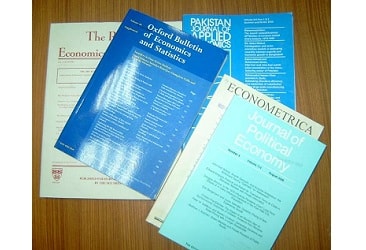 Recently, the Hyderabad-based OMICS Group, which publishes over 700 journals, was in the news for its deceptive business practices.
The US-Federal Trade Commission charged OMICS with making false claims about peer reviewing and listing editors who have not agreed to be associated with the journals.
Jeffrey Beall, a librarian at the University of Colorado in Denver, first coined the term "predatory journals" and maintained a listing of predatory journals which was later taken down.
Cabell's International launched a revised version of the list called Cabell's Blacklist, which can be accessed for a fee at the company's website.
With over 4,000 predatory journals (according to Cabell's Blacklist), here are a few things to look out for and signs that give away a bogus journal.
A predatory journal is a publication that actively asks researchers for manuscripts.
They have no peer review system and no true editorial board and are often found to publish mediocre or even worthless papers.
They also ask for huge publication charges.
In research environments, there is usually more value for quantity over quality. Hiring and promotion of academics is based largely on their number of publications.
Predatory journals has helped many pseudo-researchers to prosper.
Harm Caused by Predatory Journals Recently, the Hyderabad-based OMICS Group, which publishes over 700 journals, was in the news for its deceptive business practices.
The US-Federal Trade Commission charged OMICS with making false claims about peer reviewing and listing editors who have not agreed to be associated with the journals.
Jeffrey Beall, a librarian at the University of Colorado in Denver, first coined the term "predatory journals" and maintained a listing of predatory journals which was later taken down.
Cabell's International launched a revised version of the list called Cabell's Blacklist, which can be accessed for a fee at the company's website.
With over 4,000 predatory journals (according to Cabell's Blacklist), here are a few things to look out for and signs that give away a bogus journal.
A predatory journal is a publication that actively asks researchers for manuscripts.
They have no peer review system and no true editorial board and are often found to publish mediocre or even worthless papers.
They also ask for huge publication charges.
In research environments, there is usually more value for quantity over quality. Hiring and promotion of academics is based largely on their number of publications.
Predatory journals has helped many pseudo-researchers to prosper.
Harm Caused by Predatory Journals
- Predatory and low-quality journals corrupt the literature.
- Medical science has been particularly hit hard, with journals now devoted to unscientific medicine. Peer review is at the heart of academic evaluation.
- Publishing without peer review [while pretending that peer review was done] gives poor and mediocre academics a chance for jobs and promotions which should go to better qualified researchers
|
▼ IMMSAREX - Maritime Search and Rescue Exercise in Bangladesh [11-28-17]
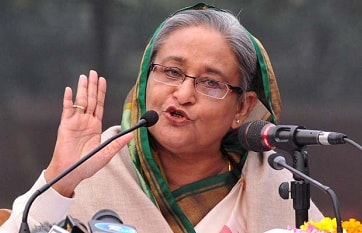 The 2017 International Multilateral Maritime Search and Rescue Exercise (IMMSAREX) was held in Bangladesh from November 26 to 28 2017.
The exercise is taking place under the aegis of Indian Ocean Naval Symposium (IONS). It was inaugurated by Prime Minister of Bangladesh Sheikh Hasina.
The IONS is a regional forum of Indian Ocean littoral states, represented by their Navy chiefs, launched by India in February 2008. It presently has 23 members and nine observers.
The exercise comes at a time of intensifying competition among regional navies for dominance in the Indian Ocean - navies of China and Japan, presently observers, in addition to member states like India, France, Iran and the U.K.
In addition, Bangladesh is also scheduling an "extraordinary conclave of Chiefs," a meeting of chiefs of Navy before it hands over the Chair to Iran next year, the source added.
Under the charter of business adopted in 2014, the grouping has working groups on Humanitarian Assistance and Disaster Relief (HADR), Information Security and Interoperability (IS&I) and anti-piracy now renamed as maritime security. The 2017 International Multilateral Maritime Search and Rescue Exercise (IMMSAREX) was held in Bangladesh from November 26 to 28 2017.
The exercise is taking place under the aegis of Indian Ocean Naval Symposium (IONS). It was inaugurated by Prime Minister of Bangladesh Sheikh Hasina.
The IONS is a regional forum of Indian Ocean littoral states, represented by their Navy chiefs, launched by India in February 2008. It presently has 23 members and nine observers.
The exercise comes at a time of intensifying competition among regional navies for dominance in the Indian Ocean - navies of China and Japan, presently observers, in addition to member states like India, France, Iran and the U.K.
In addition, Bangladesh is also scheduling an "extraordinary conclave of Chiefs," a meeting of chiefs of Navy before it hands over the Chair to Iran next year, the source added.
Under the charter of business adopted in 2014, the grouping has working groups on Humanitarian Assistance and Disaster Relief (HADR), Information Security and Interoperability (IS&I) and anti-piracy now renamed as maritime security.
|
▼ 115 backward districts set for rapid transformation by 2022 [11-27-17]
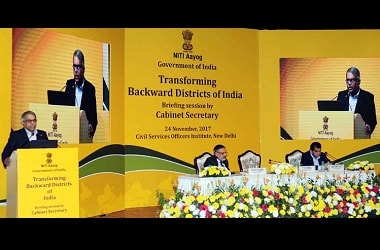 The Union Government has selected 115 backward districts for rapid transformation by 2022 in line with Prime Minister Narendra Modi's vision to create a "New India" over the next five years.
These 115 backward districts include 35 districts affected by Left Wing Extremists (LWE) violence, 55 districts just affected by LWE and another 15 including districts in Jammu and Kashmir and northeast affected by terrorism.
The Prime Minister Shri Narendra Modi has given a Vision for a new and vibrant India by 2022, the year when India celebrates its 75th year of Independence.
Inclusive development and improving the liveability of all are integral part of this vision.
One of the initiatives in this regard is to make a dramatic improvement in overall socio-economic development of backward districts.
The strategy envisaged is to adopt a focussed approach, ensure convergence of efforts of the Central, State and local Government and establish a real time monitoring mechanism to focus on outcomes that matter to common people in these districts beside giving rise to a virtuous cycle of economic development.
A total of 115 districts have been identified for this purpose on the basis of objective criteria. Such criteria include education, health, nutrition basic infrastructure like rural road connectivity, rural household electrification, access to potable water and individual toilets etc.
These districts include 35 districts which are affected by violence by Left Wing Extremists.
Besides, while selecting these districts, it has been ensured that Ministries of Government of India, implementing social sector Scheme would select at least one most backward districts in every State for extending the reach of the programme in different part of the country.
Improvement in one district is likely to spur similar growth in neighbouring districts through demonstration effect. The Union Government has selected 115 backward districts for rapid transformation by 2022 in line with Prime Minister Narendra Modi's vision to create a "New India" over the next five years.
These 115 backward districts include 35 districts affected by Left Wing Extremists (LWE) violence, 55 districts just affected by LWE and another 15 including districts in Jammu and Kashmir and northeast affected by terrorism.
The Prime Minister Shri Narendra Modi has given a Vision for a new and vibrant India by 2022, the year when India celebrates its 75th year of Independence.
Inclusive development and improving the liveability of all are integral part of this vision.
One of the initiatives in this regard is to make a dramatic improvement in overall socio-economic development of backward districts.
The strategy envisaged is to adopt a focussed approach, ensure convergence of efforts of the Central, State and local Government and establish a real time monitoring mechanism to focus on outcomes that matter to common people in these districts beside giving rise to a virtuous cycle of economic development.
A total of 115 districts have been identified for this purpose on the basis of objective criteria. Such criteria include education, health, nutrition basic infrastructure like rural road connectivity, rural household electrification, access to potable water and individual toilets etc.
These districts include 35 districts which are affected by violence by Left Wing Extremists.
Besides, while selecting these districts, it has been ensured that Ministries of Government of India, implementing social sector Scheme would select at least one most backward districts in every State for extending the reach of the programme in different part of the country.
Improvement in one district is likely to spur similar growth in neighbouring districts through demonstration effect.
|
▼ IT Act 1961 to undergo rehaul [11-23-17]
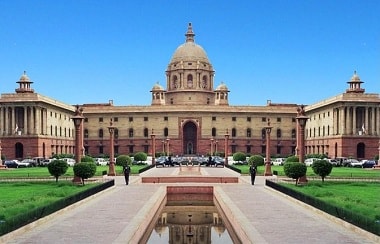 The Union Finance Ministry has constituted task force to review Income Tax (IT) Act 1961 and draft new direct tax law in consonance with current economic needs.
CBDT member Arbind Modi will be convener of task force. Chief Economic Adviser Dr. Arvind Subramanian will be its permanent Special Invitee.
Terms of Reference of Task Force
Taskforce main mandate is to draft appropriate Direct Tax Legislation keeping in view direct tax system prevalent in various countries, international best practices.
It will also take into consideration, economic needs of country and any other matter connected thereto. The Union Finance Ministry has constituted task force to review Income Tax (IT) Act 1961 and draft new direct tax law in consonance with current economic needs.
CBDT member Arbind Modi will be convener of task force. Chief Economic Adviser Dr. Arvind Subramanian will be its permanent Special Invitee.
Terms of Reference of Task Force
Taskforce main mandate is to draft appropriate Direct Tax Legislation keeping in view direct tax system prevalent in various countries, international best practices.
It will also take into consideration, economic needs of country and any other matter connected thereto.
|
▼ Union Ministry of Health and Family Welfare [11-22-17]
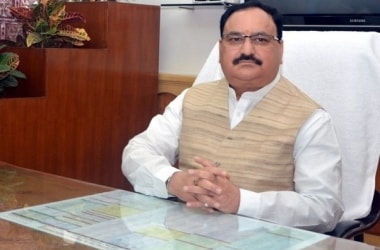 Under this awareness campaign, all states and union territories observed Vasectomy Fortnight by providing quality of male sterilisation services at public health facilities
UMHFW: Know More Under this awareness campaign, all states and union territories observed Vasectomy Fortnight by providing quality of male sterilisation services at public health facilities
UMHFW: Know More
- The Ministry of Health and Family Welfare is an Indian government ministry charged with health policy in India.
- It is also responsible for all government programs relating to family planning in India.
- The Minister of Health and Family Welfare holds cabinet rank as a member of the Council of Ministers.
- The current minister is Shri. Jagat Prakash Nadda.
- The Ministry regularly publishes the Indian Pharmacopoeia since 1955 through Indian Pharmacopoeia Commission (IPC) an autonomous body under the ministry for setting standards for drugs, pharmaceuticals and healthcare devices and technologies in India.
|
▼ RBI approves phase out of FIPB board [11-17-17]
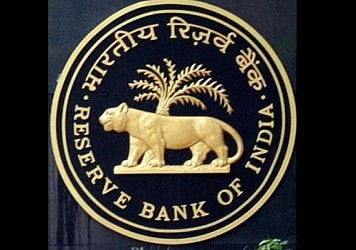 The Reserve Bank is expected to formulate standard operating procedure (SOP) for approval of FDI proposals by ministries following the government decision to phase out FIPB.
The proposal for setting up norms for foreign direct investment (FDI) approvals in sensitive sectors, which are currently under government approval of the FDI policy, was discussed at a recent inter-ministerial meeting.
FIPB: Know More The Reserve Bank is expected to formulate standard operating procedure (SOP) for approval of FDI proposals by ministries following the government decision to phase out FIPB.
The proposal for setting up norms for foreign direct investment (FDI) approvals in sensitive sectors, which are currently under government approval of the FDI policy, was discussed at a recent inter-ministerial meeting.
FIPB: Know More
- The Foreign Investment Promotion Board (FIPB) was a national agency of Government of India, with the remit to consider and recommend foreign direct investment (FDI) which does not come under the automatic route.
- It acted as a single window clearance for proposals on foreign direct investment (FDI) in India. The Foreign Investment Promotion Board (FIPB) was housed in the Department of Economic Affairs, Ministry of Finance.
- FIPB was abolished on 24 May 2017, as announced by Finance Minister Arun Jaitley during 2017-2018 budget speech in Lok Sabha.
- Members:
Secretary, Department of Economic Affairs - Chairman
Secretary, Department of Industrial Policy & Promotion - Member
Secretary, Department of Commerce - Member
Secretary, (Economic Relation), Ministry of External Affairs - Member
- The Board is empowered to co-opt Secretaries to the Government of India and other top officials of financial institutions, banks and professional experts of industry and commerce, as required.
|
▼ Sagar Kavach: Odisha-WB joint security exercise [11-16-17]
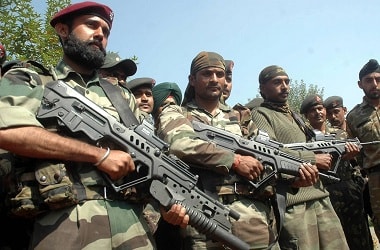 The Governments of Odisha and neighbouring West Bengal conducted joint security exercise named 'Sagar Kavach' to further tighten the existing coastal security mechanism along the 630 km long coastline.
It was security exercise to check efficacy of security parameters and preparedness of various security forces like Indian Navy, Marine police force, Indian Coast Guard (ICG), Forest Department, Fisheries and district administration. The Governments of Odisha and neighbouring West Bengal conducted joint security exercise named 'Sagar Kavach' to further tighten the existing coastal security mechanism along the 630 km long coastline.
It was security exercise to check efficacy of security parameters and preparedness of various security forces like Indian Navy, Marine police force, Indian Coast Guard (ICG), Forest Department, Fisheries and district administration.
|
▼ Joint training doctrine for Indian armed forces released for first time [11-15-17]
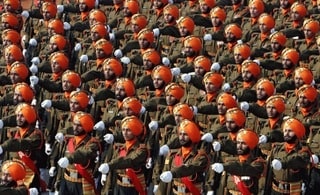 Chairman Chiefs of Staff Committee & Chief of the Naval Staff Admiral Sunil Lanba released 'Joint Training Doctrine Indian Armed Forces-2017' on 14th Nov, 2017.
It is for the first time in the history of the Armed Forces that such a keystone document has been promulgated. The document has been prepared in a 'collegiate manner' involving all the three Service Headquarters and flowing from its mother and capstone Doctrine namely, Joint Doctrine Indian Armed Forces -2017 released in April last.
The aim of the Doctrine is to promote 'Synergy' and 'Integration' amongst the three Services and other stake-holders leading to an enhanced efficiency and optimum utilisation of resources.
Besides numerous advantages of the Doctrines, this document will also go a long way in 'fostering initiative' and 'stimulating creativity' for promoting 'Integration' between the three Services in times to come.
The Doctrine brings out our approach to Joint training at macro-level, Fundamentals, Objectives, Joint Structures, Planning, Organisation amongst other aspects in existence and in use in the Armed Forces which have matured over 15 years of the existence of Headquarters Integrated Defence Staff (HQ IDS).
The concept includes 'Joint Training' as a leverage for promoting 'Diplomacy' and 'Civil-Military interface' issues have also been highlighted in the document.
This key stone Doctrine will basically serve as a 'foundation' and 'knowledge base' from which specific Directives and Strategies will be issued by the Chairman Chiefs of Staff Committee to the HQ IDS and Service HQs to consolidate proven concepts, structures, mechanisms, capacities, capabilities, etc, from time to time.
Consequent to consolidation of Joint Training, this maiden Doctrine will be further developed in due course as Doctrines are always 'unfinished products' being 'Evolving in nature', for ready reference as 'Distilled wisdom' and a 'Referral document' for the policy makers, armed forces personnel, academia, etc. Chairman Chiefs of Staff Committee & Chief of the Naval Staff Admiral Sunil Lanba released 'Joint Training Doctrine Indian Armed Forces-2017' on 14th Nov, 2017.
It is for the first time in the history of the Armed Forces that such a keystone document has been promulgated. The document has been prepared in a 'collegiate manner' involving all the three Service Headquarters and flowing from its mother and capstone Doctrine namely, Joint Doctrine Indian Armed Forces -2017 released in April last.
The aim of the Doctrine is to promote 'Synergy' and 'Integration' amongst the three Services and other stake-holders leading to an enhanced efficiency and optimum utilisation of resources.
Besides numerous advantages of the Doctrines, this document will also go a long way in 'fostering initiative' and 'stimulating creativity' for promoting 'Integration' between the three Services in times to come.
The Doctrine brings out our approach to Joint training at macro-level, Fundamentals, Objectives, Joint Structures, Planning, Organisation amongst other aspects in existence and in use in the Armed Forces which have matured over 15 years of the existence of Headquarters Integrated Defence Staff (HQ IDS).
The concept includes 'Joint Training' as a leverage for promoting 'Diplomacy' and 'Civil-Military interface' issues have also been highlighted in the document.
This key stone Doctrine will basically serve as a 'foundation' and 'knowledge base' from which specific Directives and Strategies will be issued by the Chairman Chiefs of Staff Committee to the HQ IDS and Service HQs to consolidate proven concepts, structures, mechanisms, capacities, capabilities, etc, from time to time.
Consequent to consolidation of Joint Training, this maiden Doctrine will be further developed in due course as Doctrines are always 'unfinished products' being 'Evolving in nature', for ready reference as 'Distilled wisdom' and a 'Referral document' for the policy makers, armed forces personnel, academia, etc.
|
▼ ICMR report "Indian State Level Disease Burden" released [11-15-17]
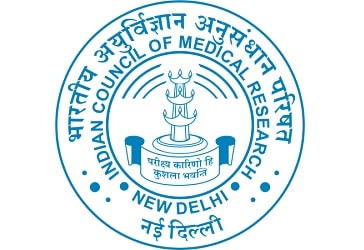 The Hon'ble Vice President of India, Shri M Venkaiah Naidu released the 'India State Level Disease Burden' report of Indian Council of Medical Research (ICMR).
Addressing the participants, the Vice President of India stated that achieving good health for all of India's population is an important goal of the Government of India and a foundation for further social and economic development.
The Vice President further stated that the health status of Indians has been improving since Independence.
The life expectancy of a person born in India in 1960 was 40 years, which has increased to about 70 years now. Of every 1000 live children born in India in 1960, about 160 died in the first year, but now this death rate of infants is about a fourth of that level.
The data and results shared by the India State-level Disease Burden Initiative today in its report, scientific paper, and the online visualization tool will serve as a useful guide for fine-tuning data driven health planning specific for health situation of each state of the country," Shri Nadda said.
The estimates released which are based on utilization of all available epidemiological data, show that the per person burden due to major infectious disease, that is, diarrhoeal diseases, lower respiratory infections, and tuberculosis is 7 to 9 times higher in the states like Bihar, Odisha, U.P, Assam, Rajasthan, M.P. and Jharkhand than in other states.
Likewise, the burden due to the leading non-communicable diseases, that is, ischemic heart disease, stroke, diabetes, chronic obstructive lung disease is 4-9 times higher in some states than in other states.
India State Level Disease Burden Initiative The Hon'ble Vice President of India, Shri M Venkaiah Naidu released the 'India State Level Disease Burden' report of Indian Council of Medical Research (ICMR).
Addressing the participants, the Vice President of India stated that achieving good health for all of India's population is an important goal of the Government of India and a foundation for further social and economic development.
The Vice President further stated that the health status of Indians has been improving since Independence.
The life expectancy of a person born in India in 1960 was 40 years, which has increased to about 70 years now. Of every 1000 live children born in India in 1960, about 160 died in the first year, but now this death rate of infants is about a fourth of that level.
The data and results shared by the India State-level Disease Burden Initiative today in its report, scientific paper, and the online visualization tool will serve as a useful guide for fine-tuning data driven health planning specific for health situation of each state of the country," Shri Nadda said.
The estimates released which are based on utilization of all available epidemiological data, show that the per person burden due to major infectious disease, that is, diarrhoeal diseases, lower respiratory infections, and tuberculosis is 7 to 9 times higher in the states like Bihar, Odisha, U.P, Assam, Rajasthan, M.P. and Jharkhand than in other states.
Likewise, the burden due to the leading non-communicable diseases, that is, ischemic heart disease, stroke, diabetes, chronic obstructive lung disease is 4-9 times higher in some states than in other states.
India State Level Disease Burden Initiative
- The India State-level Disease Burden Initiative is a joint initiative between the Indian Council of Medical Research (ICMR), Public Health Foundation of India (PHFI), and Institute for Health Metrics and Evaluation (IHME) in collaboration with the Ministry of Health and Family Welfare, Government of India.
- Additionally, the partnership is along with experts and stakeholders associated with over 100 Indian institutions, released the first comprehensive set of state-level disease burden, risk factors estimates and trends for each state in India to inform health planning to reduce health inequalities amongst states in India.
- These estimates are based on analysis of all identifiable epidemiological data from India over quarter of a century.
|
▼ India Youth Development Index and Report 2017 [11-14-17]
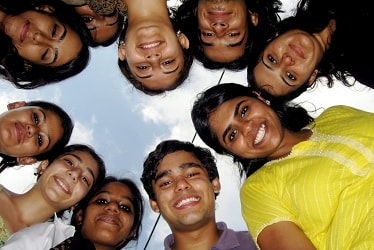 Union Minister of State for Youth Affairs and Sports (Independent Charge) Col. Rajyavardhan Rathore released the India Youth Development Index and Report 2017.
The objective of constructing the India Youth Development Index (YDI) 2017 is to track the trends in Youth Development across the States.
The Index enables recognizing the high and low performing states, identifies the weak domains and informs the policy makers the priority areas of intervention for youth development in the states.
The Rajiv Gandhi National Institute of Youth Development (RGNIYD), Sriperumbudur, Tamil Nadu, an Institute of National Importance has come out with Youth Development Index and Report 2017.
This is a pioneering attempt made by the Institute in 2010 which it followed up with the India Youth Development Index in 2017.
Constructing Youth Development Index for the year 2017 was done using the latest definition of youth as used in National Youth Policy-2014 (India) and World Youth Development Report of Commonwealth (15-29 years) as well as using the Commonwealth Indicators in order to facilitate Global comparison.
India Youth Development Index 2017: Know More Union Minister of State for Youth Affairs and Sports (Independent Charge) Col. Rajyavardhan Rathore released the India Youth Development Index and Report 2017.
The objective of constructing the India Youth Development Index (YDI) 2017 is to track the trends in Youth Development across the States.
The Index enables recognizing the high and low performing states, identifies the weak domains and informs the policy makers the priority areas of intervention for youth development in the states.
The Rajiv Gandhi National Institute of Youth Development (RGNIYD), Sriperumbudur, Tamil Nadu, an Institute of National Importance has come out with Youth Development Index and Report 2017.
This is a pioneering attempt made by the Institute in 2010 which it followed up with the India Youth Development Index in 2017.
Constructing Youth Development Index for the year 2017 was done using the latest definition of youth as used in National Youth Policy-2014 (India) and World Youth Development Report of Commonwealth (15-29 years) as well as using the Commonwealth Indicators in order to facilitate Global comparison.
India Youth Development Index 2017: Know More
- In the India Youth Development Index 2017, the first five dimensions are retained same as that of Global YDI.
- The indicators and weights have been modified based on the availability of data at sub-national level and the importance of the indicators in explaining Youth Development with the aim of capturing the multidimensional properties that indicate progress in youth development at the sub-national level i.e., state level.
- Global YDI is different from YDI constructed for India in one unique way; YDI for India adds a new domain, social inclusion, to assess the inclusiveness of societal progress as structural inequalities persist in Indian society.
- This construction helps to identify the gaps that require intensification of policy intervention.
- This report is of immense value to enable comparisons across geographical areas and categories, as human development index has done in comparing the development situation across regions, nations and localities.
- The index also measures the achievements made besides serving as an advocacy tool for youth development and facilitates to identify priority areas for development of Policy and Interventions.
- YDI-2017 will enable the policy makers track the national and the regional progress as well setbacks in youth development policies, planning, priority identification and implementation strategies.
- Besides providing insights to suggest alternatives and options, it also aids in judicious allocation of resources.
|
▼ Urdu is the second official language for Telangana [11-14-17]
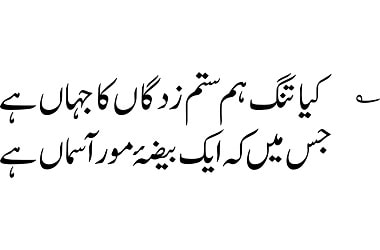 Telangana Chief Minister K Chandrashekhar Rao in the state assembly recently declared Urdu as the state's second official language.
Now all government offices from the Chief Minister's office to District Collectorate will receive all petitions in Urdu also
Every office in Telangana will have an Urdu-speaking officer
All competitive examinations in the state will also be conducted in Urdu
Article 345 of the constitution speaks about the official language of the state. According to the Article 345 "Official language or languages of a State- subject to the provisions of articles 346 and 347, the legislature of a State may by law adopt any one or more of the languages in use in the State or Hindi as the Language or Languages to be used for all or any of the official purposes of that State.
Provided that, until the Legislature of the State otherwise provides by law, the English language shall continue to be used for those official purposes within the State for which it was being used immediately before the commencement of this Constitution. Telangana Chief Minister K Chandrashekhar Rao in the state assembly recently declared Urdu as the state's second official language.
Now all government offices from the Chief Minister's office to District Collectorate will receive all petitions in Urdu also
Every office in Telangana will have an Urdu-speaking officer
All competitive examinations in the state will also be conducted in Urdu
Article 345 of the constitution speaks about the official language of the state. According to the Article 345 "Official language or languages of a State- subject to the provisions of articles 346 and 347, the legislature of a State may by law adopt any one or more of the languages in use in the State or Hindi as the Language or Languages to be used for all or any of the official purposes of that State.
Provided that, until the Legislature of the State otherwise provides by law, the English language shall continue to be used for those official purposes within the State for which it was being used immediately before the commencement of this Constitution.
|
▼ Songs in 85 languages in one concert! [11-13-17]
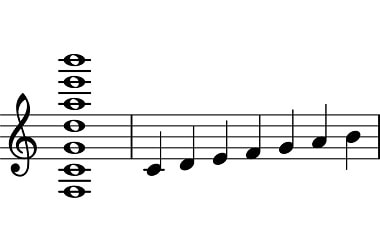 A 12-year-old girl, who can sing songs in 80 languages, is trying to break the Guinness world record in singing in most languages in one concert.
Suchetha Satish, a grade seven student of The Indian High School in Dubai, will attempt to sing songs in 85 languages during the attempt scheduled for December 29.
The Dubai prodigy said she knows to sing songs in 80 languages, a skill she acquired in just over a year.
Her plan is to learn at least five more songs in five different languages before she attempts to break the record, the report said.
Hailing from Kerala, Suchetha already knew to sing in some Indian languages like Hindi, Malayalam and Tamil.
She has also been singing English songs in school competitions. But it was only last year that she started singing in other foreign languages. Her first foreign song was in Japanese.
German, French and Hungarian songs were most difficult to learn. A 12-year-old girl, who can sing songs in 80 languages, is trying to break the Guinness world record in singing in most languages in one concert.
Suchetha Satish, a grade seven student of The Indian High School in Dubai, will attempt to sing songs in 85 languages during the attempt scheduled for December 29.
The Dubai prodigy said she knows to sing songs in 80 languages, a skill she acquired in just over a year.
Her plan is to learn at least five more songs in five different languages before she attempts to break the record, the report said.
Hailing from Kerala, Suchetha already knew to sing in some Indian languages like Hindi, Malayalam and Tamil.
She has also been singing English songs in school competitions. But it was only last year that she started singing in other foreign languages. Her first foreign song was in Japanese.
German, French and Hungarian songs were most difficult to learn.
|
▼ Facebook offers disaster maps at NDMA summit [11-13-17]
 Facebook Inc. rolled out Disaster Maps for India to help communities across the country recover and rebuild from natural disasters faster by sharing critical pieces of data sets with humanitarian agencies in a timely manner.
The new product was launched at the company's first Disaster Response Summit in India along with the National Disaster Management Authority (NDMA) to improve disaster response and disaster management in India.
According to United Nations Development Programme (UNDP) data, India is the third-worst affected country by natural disasters like floods, earthquakes, landslides, cyclones and drought.
Moreover, the response time during and after these crises is often slow and it takes significant time and resources to understand where help is needed most.
Disaster Maps, powered by Facebook's technology and intensive research, will address this critical gap in data that government organizations face when responding to a crisis.
Disaster Maps, which was introduced globally in June, uses aggregated, de-identified Facebook data to help organizations address the critical gap in information they often face when responding to natural disasters.
Facebook provides multiple types of maps during disaster response efforts, which include aggregated location information people have chosen to share with Facebook.
This helps NGOs and relief agencies get a clearer picture of where affected people are located so they can determine where resources-like food, water and medical supplies-are needed.
Types of Facebook Maps
Facebook researchers have built three kinds of maps: Facebook Inc. rolled out Disaster Maps for India to help communities across the country recover and rebuild from natural disasters faster by sharing critical pieces of data sets with humanitarian agencies in a timely manner.
The new product was launched at the company's first Disaster Response Summit in India along with the National Disaster Management Authority (NDMA) to improve disaster response and disaster management in India.
According to United Nations Development Programme (UNDP) data, India is the third-worst affected country by natural disasters like floods, earthquakes, landslides, cyclones and drought.
Moreover, the response time during and after these crises is often slow and it takes significant time and resources to understand where help is needed most.
Disaster Maps, powered by Facebook's technology and intensive research, will address this critical gap in data that government organizations face when responding to a crisis.
Disaster Maps, which was introduced globally in June, uses aggregated, de-identified Facebook data to help organizations address the critical gap in information they often face when responding to natural disasters.
Facebook provides multiple types of maps during disaster response efforts, which include aggregated location information people have chosen to share with Facebook.
This helps NGOs and relief agencies get a clearer picture of where affected people are located so they can determine where resources-like food, water and medical supplies-are needed.
Types of Facebook Maps
Facebook researchers have built three kinds of maps:
- Location density maps: These show where people are located before, during and after a disaster. We can compare this information to historical records, like population estimates based on satellite images.
Comparing these data sets can help response organizations understand areas impacted by a natural disaster.
- Movement maps: These illustrate patterns of movement between different neighbourhoods or cities over a period of several hours.
By understanding these patterns, response organizations can better predict where resources will be needed, gain insight into patterns of evacuation, or predict where traffic will be most congested.
- Safety Check: These maps are based on locations where our community uses Safety Check to notify their friends and family that they are safe during a disaster.
We are using this de-identified data in aggregate to show where more or fewer people check in safe, which may help organizations understand where people are most vulnerable and where help is needed.
Facebook's Role in Disaster Management- While globally Facebook has partnered with organizations like the Red Cross, in India, initially it will join hands with two organizations: the NDMA and SEEDS (Sustainable Environment and Ecological Development Society).
- Facebook has 2 billion-plus users globally and according to a media report, its users in India have crossed the 240 million mark, making it the largest audience country for the social media company.
- Facebook has developed a number of crisis response tools.
- It activated the Safety Check feature in 2014 and launched Community Help in 2015, which allows the Facebook community to find and give help such as food, shelter and transportation.
|
▼ What is a Cobot? [11-13-17]
 A cobot is intended to work hand-in-hand with humans in a shared workspace.
This is in contrast with full-fledged robots that are designed to operate autonomously or with limited guidance.
They support and relieve the human operator of his excess work.
The automotive sector is a large adopter of cobots. The global electronics industry is also an adopter. Industry watchers felt that manufacturing cannot be competitive without the extensive use of industrial robots.
Manufacturing is a capital-intensive sector and the idea that it can be used to create a lot of low- or medium-skilled but well-paid jobs, as it did in past centuries, is obsolete.
Benefits of cobots were compactness, low payback period, flexibility, lightweight nature, cost-effectiveness, accuracy and safety.
Other benefits include zero annual maintenance costs, reduced power consumption and retention of IP within the company.
Cosmetics firm L'Oreal has also deployed cobots.
It is estimated that a little less than 40,000 cobots have been deployed all over the world.
Big names that have entered into this field include Epson and ABB. There are about 30-40 players in this market.
The adoption has been low in India compared with China and the developed world. For every cobot sold in India, 30 are sold in China. A cobot is intended to work hand-in-hand with humans in a shared workspace.
This is in contrast with full-fledged robots that are designed to operate autonomously or with limited guidance.
They support and relieve the human operator of his excess work.
The automotive sector is a large adopter of cobots. The global electronics industry is also an adopter. Industry watchers felt that manufacturing cannot be competitive without the extensive use of industrial robots.
Manufacturing is a capital-intensive sector and the idea that it can be used to create a lot of low- or medium-skilled but well-paid jobs, as it did in past centuries, is obsolete.
Benefits of cobots were compactness, low payback period, flexibility, lightweight nature, cost-effectiveness, accuracy and safety.
Other benefits include zero annual maintenance costs, reduced power consumption and retention of IP within the company.
Cosmetics firm L'Oreal has also deployed cobots.
It is estimated that a little less than 40,000 cobots have been deployed all over the world.
Big names that have entered into this field include Epson and ABB. There are about 30-40 players in this market.
The adoption has been low in India compared with China and the developed world. For every cobot sold in India, 30 are sold in China.
|
▼ IRDAI makes Aadhaar Linking mandatory [11-9-17]
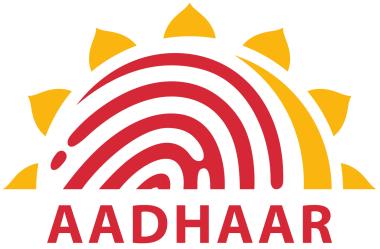 Insurance regulator IRDAI (The Insurance Regulatory and Development Authority) on Nov 8, 2017 said linkage of the unique identity number (UID) or Aadhaar with insurance policies is mandatory and asked insurers to comply with the statutory norms.
The government in June had notified the Prevention of Money Laundering (Maintenance of Records) Second Amendment Rules, 2017 making Aaadhar and PAN/Form 60 mandatory for availing financial services including insurance and also for linking the existing policies with the same.
In a communication to all life and general insurance companies, IRDAI said the rules have "statutory force" and as such they have to implement them without awaiting further instructions.
There are 24 life insurance companies and 33 general insurers (including standalone health insurers) operating in the country. Insurance regulator IRDAI (The Insurance Regulatory and Development Authority) on Nov 8, 2017 said linkage of the unique identity number (UID) or Aadhaar with insurance policies is mandatory and asked insurers to comply with the statutory norms.
The government in June had notified the Prevention of Money Laundering (Maintenance of Records) Second Amendment Rules, 2017 making Aaadhar and PAN/Form 60 mandatory for availing financial services including insurance and also for linking the existing policies with the same.
In a communication to all life and general insurance companies, IRDAI said the rules have "statutory force" and as such they have to implement them without awaiting further instructions.
There are 24 life insurance companies and 33 general insurers (including standalone health insurers) operating in the country.
|
▼ Goa tops, Bihar lowest on Gender Vulnerability Index [11-8-17]
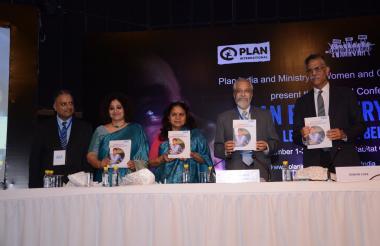 Goa ranked top and Bihar featured at the lowest in Gender Vulnerability Index (GVI) released by Child development NGO Plan India on November 1 during its national conference in Delhi.
The composite index has been developed within research for the NGO's Plan for Every Child campaign which is aimed at comprehensively understanding the dimensions of various problems affecting children, particularly girls, in difficult circumstances.
The multidimensional index, which provides a state wise ranking, has been calculated by analysing four issues pertinent to the situation of girls - child safety/protection, poverty, health and education.
In the ranking, Goa is followed by Kerala, Mizoram and Sikkim. Bihar ranked the lowest at 30, with Delhi faring only slightly better at 29 and Uttar Pradesh at 28.
The highest ranking north Indian state is Himachal Pradesh at the sixth position.
Analysing more than 170 indicators, the index has been developed to serve as measurable evidence with the aim of assisting and influencing policy makers.
The education GVI, for instance, is calculated with the help of more than just state literacy figures. The state's school dropout rate, teacher to student ratio and existing school infrastructure are also accounted for in it.
The idea in this case is to analyse available data for all factors which comprehensively impact the ability for a girl child to get an education.
Similarly, poverty GVI accounts for income, assets and land ownership indicators.
Gender vulnerability index, plan India Gender Vulnerability Index (GVI) released by Child development NGO Plan India ranks the states of India on a composite parameter of child safety/protection, poverty, education and health.
Going forward, the organisation plans to present a further breakdown in the form of a district-level quantitative index, based on the same indicators.
Karnataka is an example of a state that is overall doing well [rank 7], yet there is a considerable divide between the north and the south of the state.
Goa - 0.649
Kerala -0.625
Mizoram - 0.620
Sikkim - 0.604857
Manipur - 0.60374
Himachal Pradesh - 0.595334
Karnataka - 0.592642
Punjab - 0.585888
Maharashtra - 0.580309
Uttarakhand - 0.573855
Tamil Nadu - 0.57324
Telangana - 0.57186
Andhra Pradesh - 0.569104
Nagaland - 0.560614
Chattisgarh - 0.547195 Goa ranked top and Bihar featured at the lowest in Gender Vulnerability Index (GVI) released by Child development NGO Plan India on November 1 during its national conference in Delhi.
The composite index has been developed within research for the NGO's Plan for Every Child campaign which is aimed at comprehensively understanding the dimensions of various problems affecting children, particularly girls, in difficult circumstances.
The multidimensional index, which provides a state wise ranking, has been calculated by analysing four issues pertinent to the situation of girls - child safety/protection, poverty, health and education.
In the ranking, Goa is followed by Kerala, Mizoram and Sikkim. Bihar ranked the lowest at 30, with Delhi faring only slightly better at 29 and Uttar Pradesh at 28.
The highest ranking north Indian state is Himachal Pradesh at the sixth position.
Analysing more than 170 indicators, the index has been developed to serve as measurable evidence with the aim of assisting and influencing policy makers.
The education GVI, for instance, is calculated with the help of more than just state literacy figures. The state's school dropout rate, teacher to student ratio and existing school infrastructure are also accounted for in it.
The idea in this case is to analyse available data for all factors which comprehensively impact the ability for a girl child to get an education.
Similarly, poverty GVI accounts for income, assets and land ownership indicators.
Gender vulnerability index, plan India Gender Vulnerability Index (GVI) released by Child development NGO Plan India ranks the states of India on a composite parameter of child safety/protection, poverty, education and health.
Going forward, the organisation plans to present a further breakdown in the form of a district-level quantitative index, based on the same indicators.
Karnataka is an example of a state that is overall doing well [rank 7], yet there is a considerable divide between the north and the south of the state.
Goa - 0.649
Kerala -0.625
Mizoram - 0.620
Sikkim - 0.604857
Manipur - 0.60374
Himachal Pradesh - 0.595334
Karnataka - 0.592642
Punjab - 0.585888
Maharashtra - 0.580309
Uttarakhand - 0.573855
Tamil Nadu - 0.57324
Telangana - 0.57186
Andhra Pradesh - 0.569104
Nagaland - 0.560614
Chattisgarh - 0.547195
|
▼ BRO constructs world's highest motorable road in J&K [11-7-17]
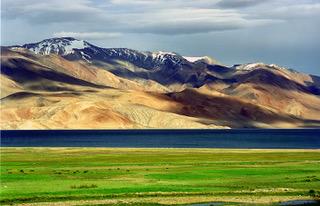 In a major feat, the Border Roads Organization (BRO) has constructed the world's highest motorable road in the Ladakh region of Jammu and Kashmir.
This road is passing through Umling La Top at a height of over 19,300 feet.
The feat was achieved under "Project Himank" of the BRO.
Being close to Hanle, the 86-km-long strategic road through Umling La Top connects Chisumle and Demchok villages, located 230km from Leh.
These villages are very close to the India-China border in eastern sector, a spokesman of BRO said.
Constructing the road at the altitude of over 19,300 feet was filled with life threatening challenges. He said the climate at the location is always adverse for construction activities.
During peak summers, temperature hovers around minus 10-20 degrees Celsius, and in winters, it dips to minus 40 degrees.
Oxygen level at the altitude is 50% less than at normal places.
Efficiency of machines and manpower declines by 50% due to harsh climate and less oxygen level. Also, machine operators have to come down every 10 minutes for oxygen.
The Project Himank has already constructed roads like Khardung La at an altitude of 17,900 ft and Chang La Pass at 17,695 ft in Leh by connecting Nubra valley and Durbuk valley in the cold desert. In a major feat, the Border Roads Organization (BRO) has constructed the world's highest motorable road in the Ladakh region of Jammu and Kashmir.
This road is passing through Umling La Top at a height of over 19,300 feet.
The feat was achieved under "Project Himank" of the BRO.
Being close to Hanle, the 86-km-long strategic road through Umling La Top connects Chisumle and Demchok villages, located 230km from Leh.
These villages are very close to the India-China border in eastern sector, a spokesman of BRO said.
Constructing the road at the altitude of over 19,300 feet was filled with life threatening challenges. He said the climate at the location is always adverse for construction activities.
During peak summers, temperature hovers around minus 10-20 degrees Celsius, and in winters, it dips to minus 40 degrees.
Oxygen level at the altitude is 50% less than at normal places.
Efficiency of machines and manpower declines by 50% due to harsh climate and less oxygen level. Also, machine operators have to come down every 10 minutes for oxygen.
The Project Himank has already constructed roads like Khardung La at an altitude of 17,900 ft and Chang La Pass at 17,695 ft in Leh by connecting Nubra valley and Durbuk valley in the cold desert.
|
▼ CATOBAR- Cataput based aircraft launch mechanism [11-7-17]
 The Navy is likely to go with an advanced catapult-based aircraft launch mechanism (CATOBAR) from the U.S. for its second indigenous aircraft carrier (IAC-II), which is on the drawing board.
For some time, India has been exploring the possibility of installing the U.S. electromagnetic aircraft launch system (EMALS).
IAC-II will have a CATOBAR launch. However, the kind of propulsion is yet to be decided.
The U.S. has offered India its latest EMALS technology, developed by General Atomics Aeronautical Systems Inc., which has just been installed on the Gerald Ford carrier.
While the older generation of CATOBAR was powered by a steam catapult, EMALS uses an electric motor-driven catapult instead, which allows the launch of much heavier aircraft and also reduces the stress on the aircraft.
However, the system is expensive, something that needs to be factored in.
The Navy envisages the IAC-II to be around 65,000 tonnes and capable of carrying over 50 aircraft.
While the Navy is keen on nuclear propulsion, which would give it unlimited range and endurance, its development in time seems doubtful.
The two countries had set up a joint working group on Aircraft Carrier Technology Cooperation (JWGACTC) under the Defence Technology and Trade Initiative, which held several rounds of discussions.
The group concluded its 4th meeting in New Delhi last Friday.
India's first domestic carrier, Vikrant, weighing 40,000 tonnes, is in an advanced stage of construction in Kochi and is scheduled to be launched by 2018-end. It works on a Short Take-Off But Arrested Recovery (STOBAR) mechanism similar to that in the present carrier INS Vikramaditya, with an angular ski-jump. The Navy is likely to go with an advanced catapult-based aircraft launch mechanism (CATOBAR) from the U.S. for its second indigenous aircraft carrier (IAC-II), which is on the drawing board.
For some time, India has been exploring the possibility of installing the U.S. electromagnetic aircraft launch system (EMALS).
IAC-II will have a CATOBAR launch. However, the kind of propulsion is yet to be decided.
The U.S. has offered India its latest EMALS technology, developed by General Atomics Aeronautical Systems Inc., which has just been installed on the Gerald Ford carrier.
While the older generation of CATOBAR was powered by a steam catapult, EMALS uses an electric motor-driven catapult instead, which allows the launch of much heavier aircraft and also reduces the stress on the aircraft.
However, the system is expensive, something that needs to be factored in.
The Navy envisages the IAC-II to be around 65,000 tonnes and capable of carrying over 50 aircraft.
While the Navy is keen on nuclear propulsion, which would give it unlimited range and endurance, its development in time seems doubtful.
The two countries had set up a joint working group on Aircraft Carrier Technology Cooperation (JWGACTC) under the Defence Technology and Trade Initiative, which held several rounds of discussions.
The group concluded its 4th meeting in New Delhi last Friday.
India's first domestic carrier, Vikrant, weighing 40,000 tonnes, is in an advanced stage of construction in Kochi and is scheduled to be launched by 2018-end. It works on a Short Take-Off But Arrested Recovery (STOBAR) mechanism similar to that in the present carrier INS Vikramaditya, with an angular ski-jump.
|
▼ Hyderabadi Biryani, Tirupati laddus on India post stamps! [11-6-17]
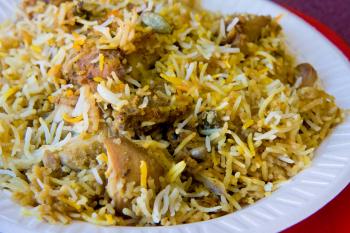 The aroma of Hyderabad's trademark cuisine biryani, baghare baingan and seviyan -may 'waft' through the air the next time you receive a mail from the India Post.
These three signature dishes of Hyderabad have made their way into India postage, with the Department of Post issuing stamps with photos of these dishes.
These stamps are part of the postage on 24 different Indian dishes, including the famous Tirupati laddu. Andhra dishes - idlidosa and pongal - have also been honoured with exclusive stamps.
Stamps on Hyderabadi dishes have come as a tribute to the rich and varied cuisine of the city two months ahead of the 500th anniversary of the construction of Golconda Fort and foundation of Qutub Shahi dynasty. Biryani was nurtured in the royal kitchens of Qutub Shahis and Asaf Jahis.
Hyderabadi Cuisine: Know More The aroma of Hyderabad's trademark cuisine biryani, baghare baingan and seviyan -may 'waft' through the air the next time you receive a mail from the India Post.
These three signature dishes of Hyderabad have made their way into India postage, with the Department of Post issuing stamps with photos of these dishes.
These stamps are part of the postage on 24 different Indian dishes, including the famous Tirupati laddu. Andhra dishes - idlidosa and pongal - have also been honoured with exclusive stamps.
Stamps on Hyderabadi dishes have come as a tribute to the rich and varied cuisine of the city two months ahead of the 500th anniversary of the construction of Golconda Fort and foundation of Qutub Shahi dynasty. Biryani was nurtured in the royal kitchens of Qutub Shahis and Asaf Jahis.
Hyderabadi Cuisine: Know More
- Biryani in Persian means fried onion.
- The fables surrounding the origin of biryani are many . Emperor Babar was credited with bringing biryani to north India.
- In the south, Qutub Shahis, who were of Iranian descent, introduced several Persian and Turkish dishes.
- The Asaf Jahis, who were influenced by Moghuls, added more dishes to Hyderabadi cuisine.
- Hyderabadi cuisine was also enriched by Sufi saints. Those in the 'Khanqah' of Sufi saints brought with them their own recipes.
- There was interchange of recipes leading to new dishes with different flavour. Thus Hyderabadi biryani, though of Persian origin, turned native with a dash of local spices.
- Bagare baingan is a hallmark dish of royal kitchens of Hyderabad. As brinjal is a native Indian plant, it had always formed part of the Indian cuisine.
- Tomato is a later entrant into the Indian kitchen and forms an important ingredient in Andhra Pulao, which is also of Persian-Central Asian origin.
- Cuisine experts are not sure when seviyan became part of Id-ul-Fitr celebrations.
- Seviyan was introduced into Deccan by the Qutub Shahis.
|
▼ SAAW: Smart Anti Airfield Weapon [11-6-17]
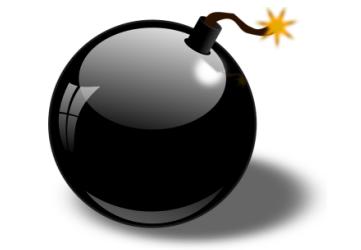 The government indicated on 3rd Nov 2017 that an indigenously developed light weight 'Glide' bomb has been successfully tested in Chandipur in Odisha, marking a major milestone in developing such weapons.
The bomb - SAAW (Smart Anti Airfield Weapon) - was dropped from an Indian Air Force (IAF) aircraft at the Integrated Test Range (ITR) in Chandipur on Thursday.
"The guided bomb released from the aircraft and guided through precision navigation system, reached the targets at greater than 70 km range, with high accuracies," the defence ministry said in a statement.
It said a total of three tests with "different release conditions" and ranges were conducted and were all successful.
The guided bomb is developed by the Research Centre Imarat (RCI), Defence Research and Development Organisation (DRDO), along with other laboratories of the DRDO and the Indian Air Force. The government indicated on 3rd Nov 2017 that an indigenously developed light weight 'Glide' bomb has been successfully tested in Chandipur in Odisha, marking a major milestone in developing such weapons.
The bomb - SAAW (Smart Anti Airfield Weapon) - was dropped from an Indian Air Force (IAF) aircraft at the Integrated Test Range (ITR) in Chandipur on Thursday.
"The guided bomb released from the aircraft and guided through precision navigation system, reached the targets at greater than 70 km range, with high accuracies," the defence ministry said in a statement.
It said a total of three tests with "different release conditions" and ranges were conducted and were all successful.
The guided bomb is developed by the Research Centre Imarat (RCI), Defence Research and Development Organisation (DRDO), along with other laboratories of the DRDO and the Indian Air Force.
|
▼ ISA-EBRD sign declaration for promoting solar energy [11-3-17]
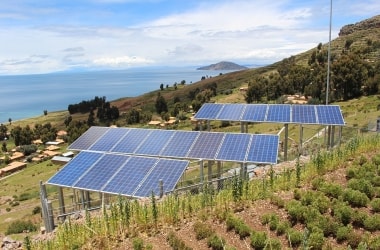 The International Solar Alliance (ISA) and the European Bank for Reconstruction and Development (EBRD) on Nov 2, 2017 signed a Joint Financial Partnership Declaration for the promotion of solar energy.
The collaboration between the ISA and the EBRD would also help funding of solar projects both in African and other countries.
The EBRD invests in 38 emerging economies across three continents, according to a set of criteria that aim to make its countries more competitive, better governed, greener, more inclusive, more resilient and more integrated.
The value of joint India-EBRD investment in its region of operation is estimated at around €1 billion, mostly in the private sector.
The bank says it has worked closely with several Indian partners in its countries of operations, including the Tata Group, EximBank, SREI and Jindal. The International Solar Alliance (ISA) and the European Bank for Reconstruction and Development (EBRD) on Nov 2, 2017 signed a Joint Financial Partnership Declaration for the promotion of solar energy.
The collaboration between the ISA and the EBRD would also help funding of solar projects both in African and other countries.
The EBRD invests in 38 emerging economies across three continents, according to a set of criteria that aim to make its countries more competitive, better governed, greener, more inclusive, more resilient and more integrated.
The value of joint India-EBRD investment in its region of operation is estimated at around €1 billion, mostly in the private sector.
The bank says it has worked closely with several Indian partners in its countries of operations, including the Tata Group, EximBank, SREI and Jindal.
|
▼ India-Kazakh joint army exercise Prabal Dostyk [11-3-17]
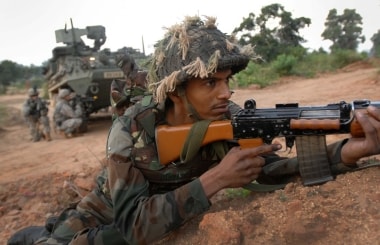 The Indian and the Kazakh Armies on Nov 2, 2017 commenced a 14-day joint exercise "Prabal Dostyk" in Himachal Pradesh's Bakloh town in Chamba district.
The joint exercise is aimed at enhancing the military ties between both the countries.
The training contingents comprise of platoon strength from 3rd Battalion of the 11th Gorkha Rifles of the Indian Army and a similar strength of the Kazakhstan Army.
Senior military observers of both the countries will witness the validation phase of the joint exercise.
The aim of the 'joint exercise' is to acquaint both forces with each other's operating procedures in the backdrop of counter-insurgency and counter-terrorism operations under the UN mandate.
The overall aim is to enhance the existing military relationship between the Indian and the Kazakhstan armies and achieve synergy for joint conduct of operation as and when the requirement arises.
Personnel of both the contingents were hopeful of a fruitful learning experience and were sanguine that the two weeks of training would go a long way in enhancing ties not only between the two armies but also between the people of the two great nations. The Indian and the Kazakh Armies on Nov 2, 2017 commenced a 14-day joint exercise "Prabal Dostyk" in Himachal Pradesh's Bakloh town in Chamba district.
The joint exercise is aimed at enhancing the military ties between both the countries.
The training contingents comprise of platoon strength from 3rd Battalion of the 11th Gorkha Rifles of the Indian Army and a similar strength of the Kazakhstan Army.
Senior military observers of both the countries will witness the validation phase of the joint exercise.
The aim of the 'joint exercise' is to acquaint both forces with each other's operating procedures in the backdrop of counter-insurgency and counter-terrorism operations under the UN mandate.
The overall aim is to enhance the existing military relationship between the Indian and the Kazakhstan armies and achieve synergy for joint conduct of operation as and when the requirement arises.
Personnel of both the contingents were hopeful of a fruitful learning experience and were sanguine that the two weeks of training would go a long way in enhancing ties not only between the two armies but also between the people of the two great nations.
|
▼ Blue Flag 17: India participates in Bi-Annual Multilateral exercise [11-1-17]
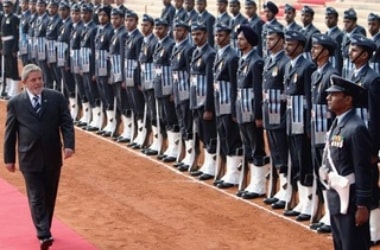 A 45 member contingent of the Indian Air Force left for Israel today to participate in exercise ‘Blue Flag-17’.
Blue Flag is a bi-annual multilateral exercise which aims to strengthen military cooperation amongst participating nations. Indian Air Force is participating with the C-130J special operations aircraft along with Garud commandos.
The exercise would provide a platform for sharing of knowledge, combat experience and in improving operational capability of the participating nations.
The exercise is being conducted at Uvda Air Force Base in Israel from 02-16 Nov 17. The team consists of personnel from various combat elements of the IAF and is led by Gp Capt Maluk Singh VSM.
This is the first time the Indian Air Force is operating with Israeli AF in a multilateral exercise setting. Exercise Blue Flag gives opportunity to the IAF to share and learn best practices with some of the best professionals from other Air Forces. A 45 member contingent of the Indian Air Force left for Israel today to participate in exercise ‘Blue Flag-17’.
Blue Flag is a bi-annual multilateral exercise which aims to strengthen military cooperation amongst participating nations. Indian Air Force is participating with the C-130J special operations aircraft along with Garud commandos.
The exercise would provide a platform for sharing of knowledge, combat experience and in improving operational capability of the participating nations.
The exercise is being conducted at Uvda Air Force Base in Israel from 02-16 Nov 17. The team consists of personnel from various combat elements of the IAF and is led by Gp Capt Maluk Singh VSM.
This is the first time the Indian Air Force is operating with Israeli AF in a multilateral exercise setting. Exercise Blue Flag gives opportunity to the IAF to share and learn best practices with some of the best professionals from other Air Forces.
|
▼ Sakharov prize goes to Venezuela opposition [11-1-17]
 The opposition in Venezuela and the country's political prisoners have won the European Union's top human rights award, the Sakharov prize.
The president of the European Union Parliament , Antonio Tajani, said many people in Venezuela had been deprived of their fundamental freedoms.
He called the president a "dictator" and said: "We cannot remain silent."
The freedom of thought prize is awarded annually in memory of Andrei Sakharov, a Soviet scientist and dissident.
Venezuela is mired in a deep political and economic crisis which has left the South American country deeply polarised between supporters of the socialist government headed by President Nicolas Maduro, and its opponents.
More than 120 people were killed in protest-related violence during a spate of anti-government demonstrations earlier this year.
The €50,000-prize ($58,000; £45,000) will be awarded on 13 December in Strasbourg.
Last year's prize was awarded to two Yazidi women who escaped sexual enslavement by so-called Islamic State (IS) in Iraq.
Member of the Alliance of Liberals and Democrats for Europe, Beatriz Becerra, congratulated the prize-winners.
The recipients of the Sakharov receive a monetary prize of 50,000 euros ($59,000).
The two other nominees for the prize were Guatemalan human rights activist Aura Lolita Chavez Izcaquic and journalist Dawit Isaak, imprisoned without trial in Eritrea since 2001. The opposition in Venezuela and the country's political prisoners have won the European Union's top human rights award, the Sakharov prize.
The president of the European Union Parliament , Antonio Tajani, said many people in Venezuela had been deprived of their fundamental freedoms.
He called the president a "dictator" and said: "We cannot remain silent."
The freedom of thought prize is awarded annually in memory of Andrei Sakharov, a Soviet scientist and dissident.
Venezuela is mired in a deep political and economic crisis which has left the South American country deeply polarised between supporters of the socialist government headed by President Nicolas Maduro, and its opponents.
More than 120 people were killed in protest-related violence during a spate of anti-government demonstrations earlier this year.
The €50,000-prize ($58,000; £45,000) will be awarded on 13 December in Strasbourg.
Last year's prize was awarded to two Yazidi women who escaped sexual enslavement by so-called Islamic State (IS) in Iraq.
Member of the Alliance of Liberals and Democrats for Europe, Beatriz Becerra, congratulated the prize-winners.
The recipients of the Sakharov receive a monetary prize of 50,000 euros ($59,000).
The two other nominees for the prize were Guatemalan human rights activist Aura Lolita Chavez Izcaquic and journalist Dawit Isaak, imprisoned without trial in Eritrea since 2001.
|